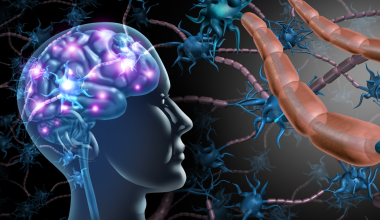Chronic pain can limit a persons independence and quality of life. Pain clinics exist to help restore functioning through various methods. One of the most effective is cognitive behavioural therapy (CBT).
The Health Insider team was curious as to why CBT, a psychological approach, works so well to treat physical pain. Join us as we learn about pain clinics in Canada and why CBT is effective.
Chronic Pain
Nearly eight million Canadians are living with chronic pain, according to The Government of Canada.
Levels of pain can range from a dull throb to feeling like you’re being stabbed. Experiencing unending pain, especially without knowing the cause, can make a person feel helpless.
Because of the long term nature of chronic pain, it’s not only a physical battle, but also a mental one. The Canadian Pain Task Force writes that “treatment should integrate pharmacological, physical, psychological, spiritual, self-management, and other approaches, as appropriate.”
What are Pain Clinics?
Pain clinics bring different specialists together to offer various treatment options to their patients.
- Physiatrists
- Psychologists or counsellors
- Physiotherapists
- Neurologists, anesthesiologists, physiatrists or physical medicine specialists, internists, and family medicine doctors
- A nurse or social worker to help coordinate care.
Availability of services vary depending on the clinic and what care other patients are receiving.
Typically, clinics lean towards choosing non-surgical and non-opioid treatments. Doctors aim to understand the problems caused by your chronic pain and restore functioning for a sense of independence.
Some clinics may let you self-refer, but typically, you will need a referral from a doctor or a nurse practitioner.
What is Cognitive Behavioural Therapy?
CBT is a form of short term therapy designed to change your mindset and outlook on life. The University of California cites that 12 weeks of once-a-week therapy has proven to be effective in studies, but in practice, they say patients generally need more sessions.
It may seem counterintuitive to treat the mind and not the body for chronic pain, but “thoughts, feelings, and behaviours are inter-connected, so if you change one, it has an effect on the other two,” writes Anxiety Canada.
CBT for Chronic Pain
CBT changes the way that chronic pain sufferers view their pain. Michael Lewandowski, Ph.D., says that “CBT can change the thoughts, emotions, and behaviors related to pain, improve coping strategies, and put the discomfort in a better context.”
To understand the severe psychological distress caused by chronic pain, it’s important to know that this disease is “associated with the lowest quality of life among all chronic health conditions,” according to Pain Canada.
While pain clinics can and do prescribe medications to help with pain, medication on its own isn’t a very effective option for long term pain management.
“Cognitive behavioral therapy yields better social and physical function, as well as 25% greater ability to cope, in chronic pain patients than other behavioral therapies, medications and physical therapy,” NIH reports.
A benefit of CBT is that it can also be done virtually. However, not all pain clinics offer a virtual option, so you may have to do a little searching.
Virtual services allow more people to access therapy without having to leave their house. This helps those unable to make their way to a clinic either due to pain or location.
CBT can be used in conjunction with other treatments and lifestyle changes. ECHO suggests gentle exercise, which “can motivate your body and mind to be more active and can help with pain relief. Taking a jog, practicing yoga, playing badminton or even going for a walk can help.”
Learn more about the benefits of yoga with The Health Insider’s article Namaste at Home: Creating Your Perfect Yoga Haven.
Of course, not everyone will be able to do these activities. They can be helpful strategies but it’s crucial to listen to your body and not push yourself to the point of further injury or pain.
Insurance
Some services provided by pain clinics are covered by insurance while others are not. It depends on province/territory, service type, and private insurance coverage.
The University of British Columbia found that while medications and surgeries are typically covered by provincial insurance, other treatments are not.
“In Canada, patients are often required to pay out–of–pocket for less invasive, non–conventional treatment options, such as acupuncture, cognitive behavioural therapy, or customized exercise plans,” UBC reports.
Check with your private insurance provider to see if you can use any funds allocated to psychotherapy in a pain clinic setting. You may be able to claim CBT for reimbursement if you receive coverage in this area.
Finding Support for Chronic Pain
Check out The Government of Canada website to find pain clinics in your province or territory listed under the section ‘programs and services in my area’.
Going to a clinic on its own may not be enough for holistic healing. Finding support from others undergoing the same experience can make all the difference in personal morale and a sense of community.
People in Pain offers a virtual support group twice per month, a useful alternative to in person meetings. Click here to learn more and register.
Not convinced about joining a support group? Pain BC hosts a podcast called Pain Waves, which brings in experts to discuss all things related to chronic pain.
Their episode “Pain Support and Wellness Groups: A free online community of support for people in pain” talks about how a support group can help and what to expect if you join one.
Chronic pain can be debilitating both physically and mentally. The Canadian Pain Task Force is working towards making pain care more accessible, but for those currently suffering, there are effective treatment options in place.
The information provided on TheHealthInsider.ca is for educational purposes only and does not substitute for professional medical advice. TheHealthInsider.ca advises consulting a medical professional or healthcare provider when seeking medical advice, diagnoses, or treatment.










